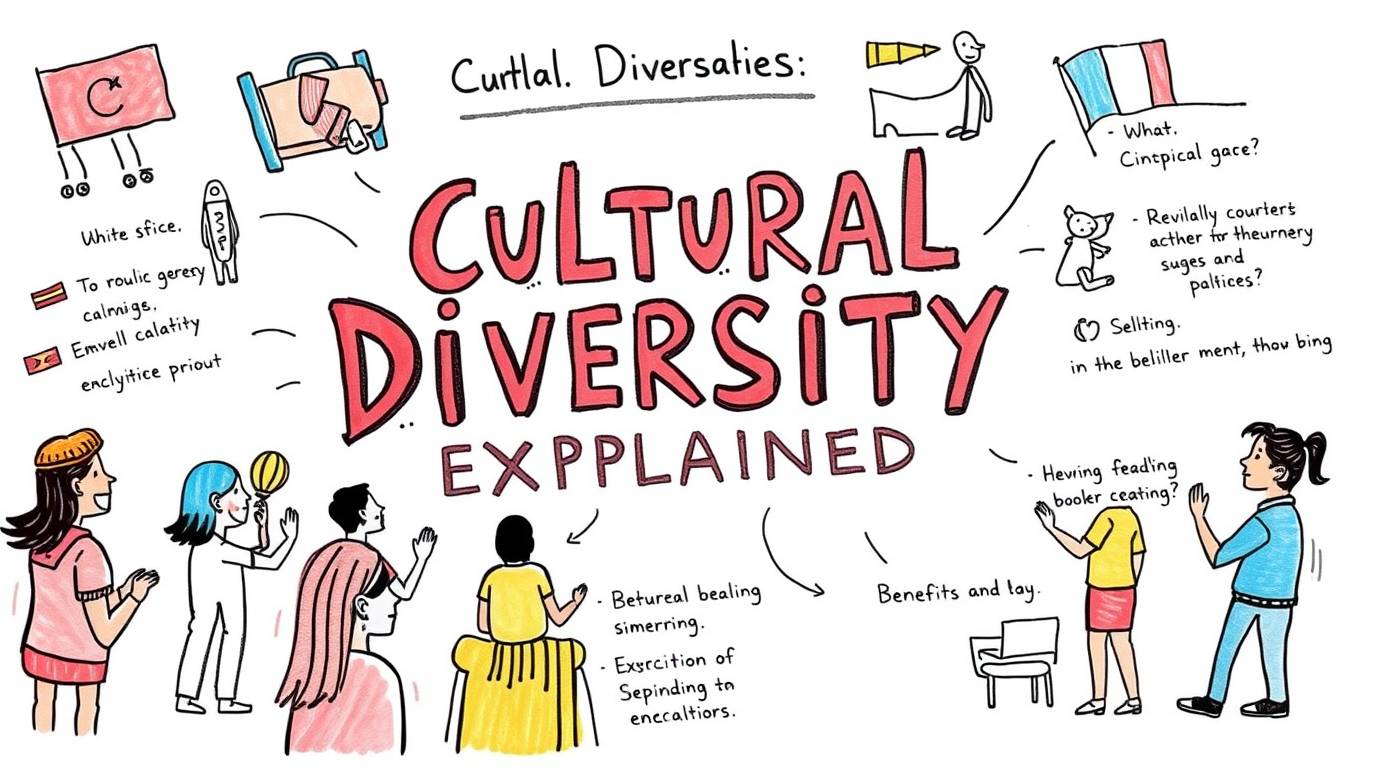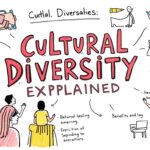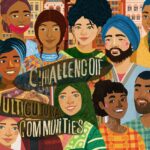We offer a wide collection of free, high-quality printable coloring pages for kids and adults. From cute animals to intricate mandalas, our designs bring creativity and relaxation to everyone. Download, print, and start coloring today!

Have you ever wondered what makes the world so rich and colorful? The answer lies in cultural diversity.
But what exactly is cultural diversity, and why does it matter to you? Understanding this concept can open your eyes to new perspectives, improve your relationships, and even boost your personal growth. In this complete guide, you’ll discover everything you need to know about cultural diversity—what it means, why it’s important, and how you can embrace it in your daily life. Keep reading to unlock the power of diversity and see the world in a whole new way.Cultural Diversity Basics
Cultural diversity means the variety of cultures in a place or group. It includes different languages, traditions, beliefs, and ways people life. Understanding cultural diversity helps us respect others and work well together. This section explains the basics of cultural diversity, its key ideas, types, and examples around the world.Key Concepts of Cultural Diversity
Cultural diversity is about recognizing and valuing differences among people. It includes visible traits like clothing and food, and invisible ones like values and beliefs. Here are important ideas to know:- Culture: A group’s shared habits, ideas, and customs.
- Diversity: The presence of many different elements.
- Inclusion: Making sure everyone feels accepted and valued.
- Multiculturalism: Support for many cultures living together.
-
Culture
Meaning: The shared habits, traditions, values, and beliefs that shape a group of people.
Example: Language, food, clothing styles, religious practices, and traditional festivals. -
Diversity
Meaning: The presence of a variety of differences among people.
Example: Different races, religions, ethnicities, genders, and abilities in one community. -
Inclusion
Meaning: The practice of ensuring that all people feel welcomed, respected, and valued, regardless of their background.
Example: Schools and workplaces that create equal opportunities and celebrate different identities. -
Multiculturalism
Meaning: A situation where multiple cultures coexist and interact within the same society.
Example: Global cities like New York, London, or Toronto, where many ethnic groups live side by side.
Types Of Diversity
Cultural diversity includes many types of differences. These types show how people vary in many ways. Some common types include:- Ethnic diversity: Differences in race and ethnicity.
- Linguistic diversity: Different languages spoken.
- Religious diversity: Various faiths and beliefs.
- Social diversity: Differences in social class and background.
- Generational diversity: Different age groups and experiences.
Global Examples
Cultural diversity exists everywhere. Countries, cities, and workplaces show many examples of how cultures mix. Some notable cases:- Canada: Known for its multicultural policies. People from many countries live and work together.
- India: Home to many religions, languages, and traditions all in one country.
- Brazil: A mix of Indigenous, African, and European cultures creates unique traditions.
- South Africa: Called the “Rainbow Nation” for its many ethnic groups and languages.

Benefits Of Cultural Diversity
Cultural diversity means the presence of many different cultural groups in one place. It includes differences in language, traditions, beliefs, and lifestyles. Embracing cultural diversity brings many benefits to society, businesses, and individuals. It helps build stronger communities, grows the economy, and encourages fresh ideas. Understanding these benefits shows why cultural diversity matters in our world today.Social Advantages
Cultural diversity creates a rich social environment. It helps people learn about different ways of life and understand each other better. This leads to respect and reduces discrimination. Diverse communities enjoy many social benefits:- Improved communication: People learn new languages and ways to express ideas.
- Stronger relationships: Mixing cultures builds friendships and trust.
- Greater empathy: Exposure to different struggles and stories increases kindness.
- Community growth: Events, festivals, and shared traditions bring people together.
Economic Impact
Diversity boosts the economy in many ways. It allows businesses to reach wider markets and serve more customers. Companies with diverse teams perform better financially. A mix of cultures brings different skills and knowledge to the workplace.| Economic Benefit | Explanation |
|---|---|
| Access to global markets | Multicultural staff understand different cultures and languages. |
| Higher productivity | Diverse teams combine strengths for better problem-solving. |
| Talent attraction | Companies open to all cultures attract skilled workers worldwide. |
| Customer satisfaction | Products and services better match cultural preferences. |
Innovation And Creativity
Cultural diversity sparks new ideas and creative solutions. Different backgrounds bring unique viewpoints. This variety fuels innovation in many fields, including technology, art, and science.- Fresh perspectives: Different experiences inspire original thinking.
- Problem-solving: Teams with diverse views find more solutions.
- Creative collaboration: Mixing cultures encourages new ways to work.
- Learning opportunities: Diverse groups share knowledge and skills.
Challenges In Diverse Societies
Cultural diversity brings many benefits to societies. It enriches communities with different ideas, traditions, and skills. Yet, it also presents certain challenges in diverse societies. These challenges can affect social harmony, workplace efficiency, and personal relationships. Understanding these issues helps in building respect and cooperation among people from different backgrounds. This section covers three major challenges: communication barriers, cultural misunderstandings, and integration issues. Each plays a key role in how well people connect and work together in diverse settings.Communication Barriers
One of the biggest challenges of cultural diversity is communication barriers. People from different cultures often speak different languages or dialects. Even when they speak the same language, accents and slang can confuse. This affects cross-cultural communication in workplaces and communities. Common communication barriers include:- Language differences
- Non-verbal cues like gestures and facial expressions
- Different communication styles (direct vs. indirect)
- Assumptions and stereotypes
| Barrier | Effect | Solution |
|---|---|---|
| Language Differences | Misunderstood instructions | Provide translators and language classes |
| Non-verbal Cues | Wrong interpretations | Educate about cultural gestures |
| Communication Styles | Conflicts or offense | Promote open dialogue and respect |
Cultural Misunderstandings
Cultural misunderstandings in the workplace often arise due to differences in beliefs, values, and customs. These misunderstandings can cause tension or reduce teamwork. For example, what is polite in one culture may seem rude in another. Such issues are common in multicultural integration efforts. Examples of cultural misunderstandings:- Different views on time management (punctuality vs. flexibility)
- Varied approaches to hierarchy and authority
- Diverse ways of expressing disagreement or feedback
- Religious or holiday observances
Integration Issues
Integration issues occur when people from diverse backgrounds struggle to feel part of the community or workplace. This challenge affects social cohesion and personal well-being. Barriers to integration include language, cultural differences, and social exclusion. Key factors causing integration problems:- Lack of shared social spaces
- Discrimination or prejudice
- Economic inequality and job access
- Limited cultural exchange opportunities

Promoting Cultural Diversity
Promoting cultural diversity is essential for building open and respectful societies. It means encouraging people from different backgrounds to share their traditions, ideas, and values. This helps reduce prejudice and creates stronger bonds among individuals. Efforts to promote cultural diversity happen in schools, workplaces, and local communities. These efforts make sure everyone feels valued and included, regardless of their culture.Educational Approaches
Schools play a key role in promoting cultural diversity. Teaching students about different cultures helps them understand and respect others. This can reduce stereotypes and promote kindness. Effective educational approaches include:- Multicultural curriculum: Lessons include stories, history, and traditions from various cultures.
- Language learning: Offering classes in multiple languages encourages communication and appreciation.
- Celebration of cultural events: Schools organize events like cultural fairs and international days.
- Anti-bias training for teachers: Educators learn how to handle diversity sensitively.
-
Improved Empathy
-
Description: Students develop a deeper ability to understand and share the feelings of others.
-
-
Critical Thinking
-
Description: Exposure to different perspectives encourages students to question assumptions and think independently.
-
-
Global Readiness
-
Description: Students gain the skills and mindset needed to thrive in diverse workplaces and multicultural societies.
-
Workplace Inclusion
Creating a diverse workplace helps companies grow and innovate. Inclusion means everyone can contribute their unique skills and perspectives. Employers must build fair and welcoming environments. Steps to promote workplace inclusion:- Diverse hiring: Recruit candidates from different backgrounds.
- Bias-free policies: Ensure rules treat all employees fairly.
- Training programs: Teach staff about cultural awareness and respect.
- Employee resource groups: Support networks for different cultural communities.
- Open communication: Encourage sharing of ideas and concerns.
| Practice | Impact |
|---|---|
| Diverse hiring | Brings fresh ideas and perspectives |
| Training programs | Reduces misunderstandings and conflicts |
| Employee groups | Builds support and belonging |
Community Initiatives
Communities can promote cultural diversity through local projects and events. These initiatives bring people together and celebrate differences. Examples of community initiatives:- Multicultural festivals: Events showcasing food, music, and art from various cultures.
- Language exchange programs: People practice new languages and learn about cultures.
- Workshops and talks: Sessions on cultural traditions, history, and social issues.
- Support for minority groups: Providing resources and safe spaces.
- Stronger social bonds
- Greater understanding
- Increased respect
- Reduced prejudice
| Activity | Benefit |
|---|---|
| Festivals | Celebrate diversity and bring people together |
| Language programs | Promote communication and cultural exchange |
| Workshops | Educate and raise awareness |
Cultural Diversity In Practice
Cultural diversity in practices shows how different cultures interact and grow together in real life. It goes beyond the cultural diversity definition by focusing on actual examples, policies, and future directions. This helps people understand how ethnic diversity and multiculturalism shape communities, workplaces, and societies. Practicing cultural diversity means encouraging cultural inclusion, improving cross-cultural communication, and supporting social integration. It also involves diversity management and building cultural competency to create respectful, fair environments for everyone.Case Studies
Case studies reveal how cultural diversity works in real settings. They show successes and challenges in managing diverse groups. For example, a tech company in the USA increased productivity by hiring employees from various ethnic backgrounds. They focused on diversity management and training to improve cross-cultural communication. This helped reduce misunderstandings and boosted teamwork. Another case is a school in Canada that promotes multiculturalism by including cultural stories and holidays in its curriculum. This encourages respect and social integration among students from different cultures.- Company A: Improved innovation through ethnic diversity
- School B: Enhanced student inclusion with cultural programs
- City C: Used public events to celebrate cultural diversity
| Case | Focus | Outcome |
|---|---|---|
| Company A | Diversity Management | Higher innovation and teamwork |
| School B | Multicultural Curriculum | Better social integration |
| City C | Cultural Events | Community respect and inclusion |
Successful Policies
Effective diversity policies create fair and welcoming spaces. Governments and organizations use these policies to support cultural inclusion and improve cultural competency. For example, some companies require cross-cultural communication training for all employees. This helps workers understand and respect cultural differences. Schools may have policies that celebrate various cultures through events and classes. Public services also adopt rules to make sure everyone receives equal treatment, regardless of ethnicity.- Mandatory diversity training programs
- Inclusive hiring practices
- Celebration of cultural holidays
- Language support services
| Policy Area | Purpose |
|---|---|
| Diversity Training | Build cultural competency |
| Hiring Practices | Promote ethnic diversity |
| Community Events | Encourage social integration |
| Language Services | Improve cross-cultural communication |
Future Trends
Global cultural trends point to more diversity and inclusion in the future. Technology helps connect people from many backgrounds, increasing cross-cultural communication. Workplaces will focus more on diversity management to keep teams strong and creative. Schools and communities will teach cultural competency to prepare people for a global world. Policies will evolve to support multiculturalism and social integration even better.- Use of AI for better cultural understanding
- More virtual global teamwork
- Stronger laws for diversity and inclusion
- Greater focus on mental health across cultures

Frequently Asked Questions
- What does cultural Diversity mean? Cultural diversity means having various cultural or ethnic groups in one place. It enriches societies with different traditions, languages, and beliefs, promoting understanding and respect among people from diverse backgrounds.
- Why Is Cultural Diversity Important Today? Cultural diversity fosters creativity, innovation, and global collaboration. It helps build inclusive communities and improves problem-solving by incorporating multiple perspectives in workplaces and schools.
- How Does Cultural Diversity Impact Workplaces? Cultural diversity in workplaces boosts creativity and productivity. It encourages open communication, reduces conflicts, and helps companies better serve diverse customers worldwide.
- What Are Examples Of Cultural Diversity? Examples include different languages, religions, customs, food, and festivals within a community or organization. These differences create a rich cultural environment that values unique identities.





[…] Cultural diversity isn’t just about variety—it’s a powerful force that can boost your creativity, open your mind, and make your community stronger. When you embrace different traditions and ideas, you unlock new ways of thinking and solving problems. This article will show you exactly how cultural diversity benefits you and the world around you, making your everyday life more exciting and meaningful. […]